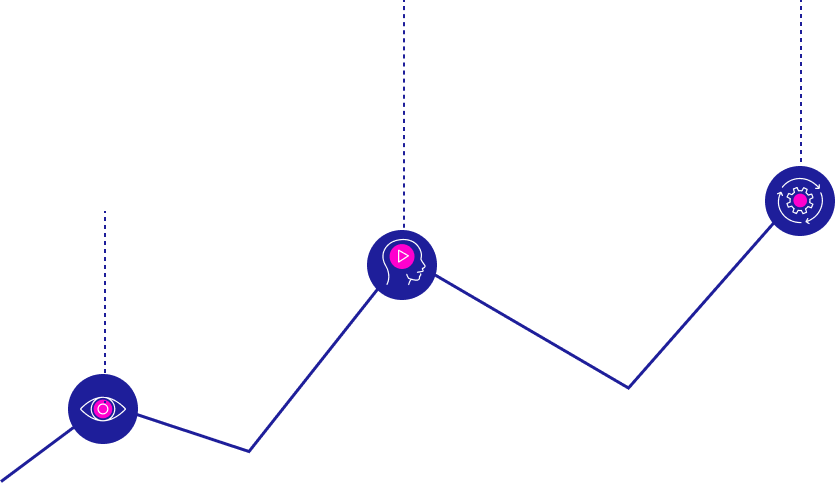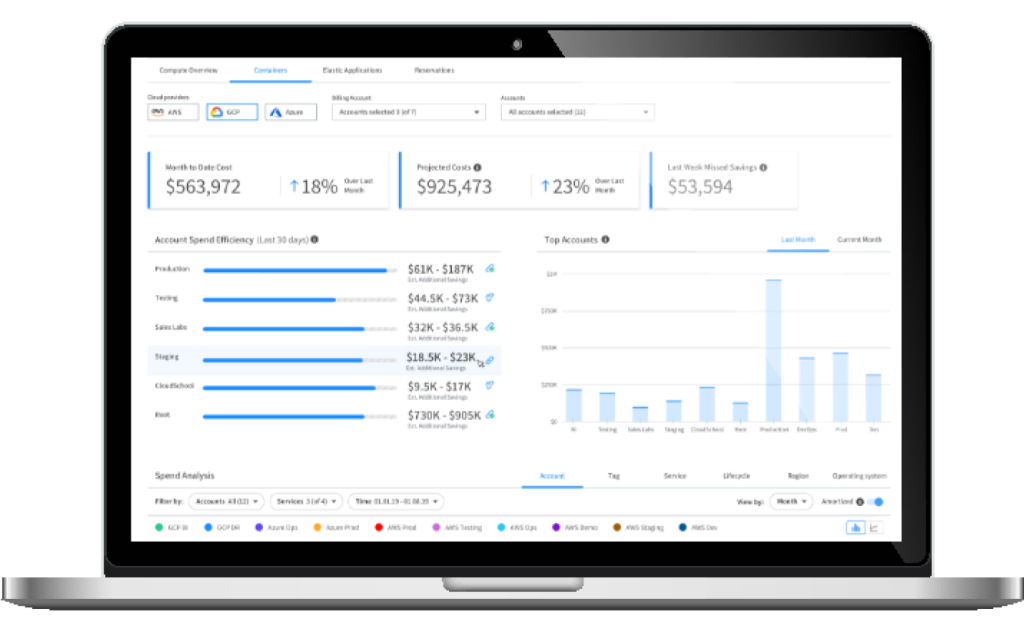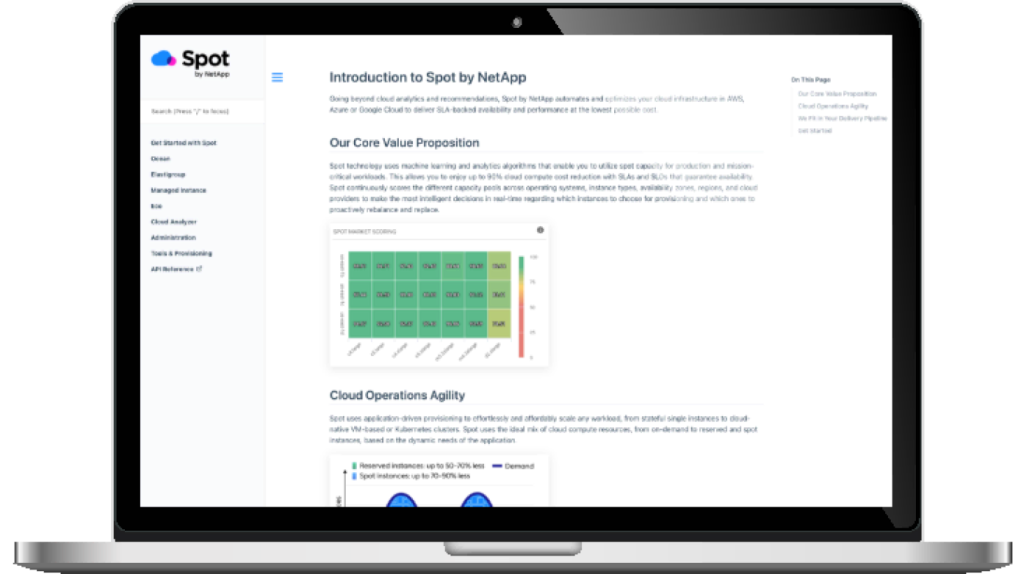Going from static to dynamic infrastructure requires new ways of thinking about IT operations.
What is CloudOps?
More cloud, less complexity, lower costs
CloudOps, short for Cloud Operations, involves managing the delivery, tuning, optimization, and performance of workloads and IT services that run in a cloud environment. This includes hybrid cloud, multi-cloud, and edge deployments. In a CloudOps world, applications automatically get the infrastructure they deserve, cloud environments are fully optimized and secure, and teams are free to focus on applications, not operations.
CloudOps extends the DevOps principles of automation, continuous improvement and collaboration to cloud-based architectures. It makes it possible to run critical operations securely on cloud-based systems, with high availability, performance and at scale. CloudOps teams achieve agility and speed by developing best practices for automating software delivery, application management, server management, and provisioning in the cloud.
Another important aspect of CloudOps is visibility. CloudOps uses analytics and data-driven insights to achieve visibility into cloud environments. This visibility delivers the data organizations need to make informed business decisions, by connecting performance, cost, usage, and reliability.
CloudOps is the key to unlocking long-term value in the cloud!

Benefits of CloudOps
Notable benefits of CloudOps:
- Improved agility and speed — Easily deploy, operate and scale infrastructure and applications based on best practices and real-time and predictive analytics of application needs.
- Automate application delivery and cloud operations — Free your operations teams from complexity and overhead with solutions that automate deployment, scaling and resource management.
- Improve application and server management — Enhance performance and resilience by monitoring, managing, and fine-tuning applications and servers in real-time, ensuring optimal resource allocation and minimizing downtime.
- Maximize the value of your cloud investment — Utilize visibility, insights, automation to continuously optimize your cloud infrastructure, reducing costs and maximizing efficiency for how you utilize the cloud.
- Significant productivity improvements — CloudOps focused tools can simplify operations by automating many manual tasks, such as server and storage provisioning, application testing, application builds, security event remediation, and monitoring and reporting.
- Enhanced security — Cloud vendors employ a high level of physical security and continuously monitor their infrastructure to prevent cybercrime and data exfiltration. Organizations can leverage these vendors’ infrastructure security when migrating to the cloud. In addition, third party tools can provide enhanced security measures such as deeper visibility, AI-driven threat detection, and automated remediation. Keep in mind that each organization is required to protect its workloads and data.
What’s the difference between CloudOps and ITOps?
ITOps
for efficient data center operations
- Static, dedicated servers hosted in-house
- Complete ownership and control
- Troubleshoot physical servers and hardware
- Traditional operations across siloed IT, security, and business teams
- Once-in-a-while optimization
CloudOps
for procuring, managing and optimizing cloud resources and services
- Infrastructure is delivered as-a-service (IaaS) and hosted by third-parties services
- IT services are operated and delivered within the cloud environment
- Distributed, complex environments accessed remotely
- Scale out at any time and pay as-needed
- Cross-functional domains operate with DevOps principles
- Ongoing optimization
What’s the difference between CloudOps and DevOps?
CloudOps helps extend DevOps, replacing on-site network servers with cloud computing tools and shifting DevOps’ continuous operations to the cloud.
DevOps is a methodology that merges development (Dev) with IT operations (Ops) to facilitate seamless collaboration. It involves implementing practices and procedures that help shorten development cycles, reduce time to market (TTM), and improve software quality and delivery. These processes improve the overall uptime and service quality and create a positive customer experience.
CloudOps takes DevOps practices and processes into the cloud. It involves provisioning and operating all IT in the cloud, including server and application management and the automated software development process. It covers cloud architecture, security, software development, compliance, and IT operations across a cloud native infrastructure.

The pillars of CloudOps serve as a roadmap for evolving operations to support your business in a cloud-based environment.
Make the cloud visible and accessible
Align business imperatives to cloud operations and execute strategies that unlock long-term value in the cloud.
Power operations with intelligent automation
Automation that is proactive, and responds to the changing requirements of the dynamic business applications it supports.
Continuously optimize
Achieve optimal performance and maximum efficiency by extending the principles of CI/CD to cloud operations.

Visibility
Gaining visibility in the cloud is the first step to gaining control
CloudOps relies on analytics to achieve visibility into cloud environments. Visibility should focus on delivering the data you need to make informed business decisions. Companies that are successful in operating the cloud have visibility that connects performance, cost, usage, and reliability.
Look for tools that help make your cloud:
Holistic + integrated
Build monitoring as a continuous loop that not only collects data across multi-cloud environments but integrates with other IT and Ops tools.
Accessible + aligned
Leverage tagging to connect business stakeholders to applications and provide ways to place cloud services in a business context.
Efficient + reliable
Spot problems before they arise, enforce governance, and manage costs and budgets more accurately.
Drive value
Identify opportunities for optimization of configurations, utilization, security and costs.
Find out more about cloud visibility with Spot and CloudCheckr
Learn moreAutomation
Automation leads to scalability
To meet the on-demand delivery of cloud resources, automation capabilities are necessary across CloudOps domains to close the gaps in spending, security and maintenance processes. Applying automation lets you standardize operational functions like provisioning, and configuring resources so you can scale fast and efficiently.
When looking to implement automation of cloud operations, look to enable:
Continuous operations
Cloud visibility turns into actions with self-healing and auto-provisioning for maximum performance with minimal interruption.
Dynamic, flexible services
Expand and iterate quickly to meet SLAs as workload requirements change.
Availability and security
Build best practices into automated workflows that protect deployments against security risk and disaster.
Integrate with CI/CD
Extend the DevOps toolchain with autonomous and self-service tools for repeatable processes.
Find out more about automation in our DevOps guide to infrastructure automation
Learn moreContinuous optimization
Realize the promise of cloud
Cloud optimization focuses on the key areas of utilization, cost and security to realize long-term value, and can’t be achieved through troubleshooting and monitoring alone. Rather than a one-time activity, or when applications fail, optimization is an ongoing cycle where intelligence drives automation to ensure cloud environments are always secure, performant and free of waste.
Optimization practices and processes should be:
Automatic and ongoing
Implement tools that enable cloud infrastructure to instantly react to new traffic patterns, code and events.
Predictive and adaptive
Driven by AI and machine learning, optimal solutions and improvements are found and automatically promoted.
ROI-driven
Define spending processes that maximize value per spend, realign and redistribute resources, and use cloud technology to monitor, execute and enforce strategies.
Find out more about optimization strategies in our guide to infrastructure right-sizing in a cloud native world
Learn morePutting CloudOps to work
The cloud requires a new operating model where the domains of DevOps, security and finance are aligned to run the cloud as efficiently and as optimized as possible. These teams need to maximize value by leveraging cloud-based tools and processes to execute operations and deliver the benefits of the cloud to the business.
DevOps
Ongoing processes to operate and manage tools that are used to maximize value, maintain availability and enable fast development.
FinOps
Bring accountability to cloud spending and enable cross-functional teams to make decisions that best support business logic.
SecOps
Create and enforce comprehensive policies that maintain security of cloud environments without compromising normal business operations.
Pillars
Domains
DevOps
- Application performance and monitoring
- Environmental health
- Software delivery
- Infrastructure provisioning
- Workload management
- Resource utilization and right sizing
FinOps
- Cloud usage and cost show back
- Identify optimization opportunities
- Cloud asset management
- Resource allocation
- Leverage cloud pricing models
- Cloud resource lifecycles
- Resource utilization and efficiency
- Forecasting and budgeting
- Commitment lifecycle
SecOps
- Configuration monitoring
- Resource inventory
- Threat detection
- Alert remediation
- Policy enforcement
- Incident response
- Threat protection
- Alert prioritization
Start your CloudOps journey
See a demo
See Spot in action
Learn about our suite of cloud workload automation and optimization solutions.
Start free trial
Try it out
Our free trial for up to 20 instances will show how Spot automates cloud infrastructure for optimized operational and cost efficiency.
Start my trial
See documentation
Get techy
Dig deep into our documentation library and our OpenAPI Specification. Find every technical detail you have ever dream of as well as REST definitions for our product suite and platform administration tasks.
Read now
